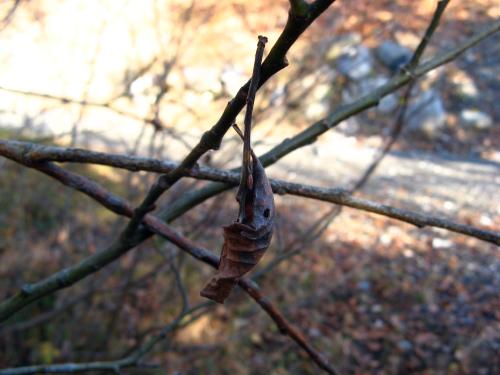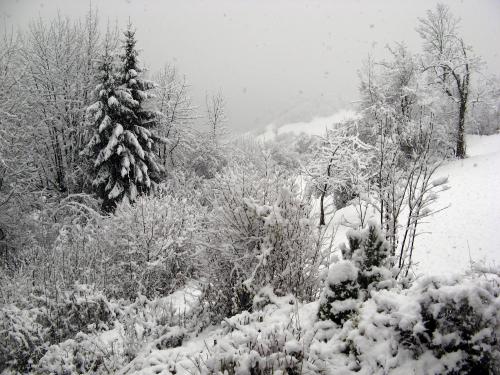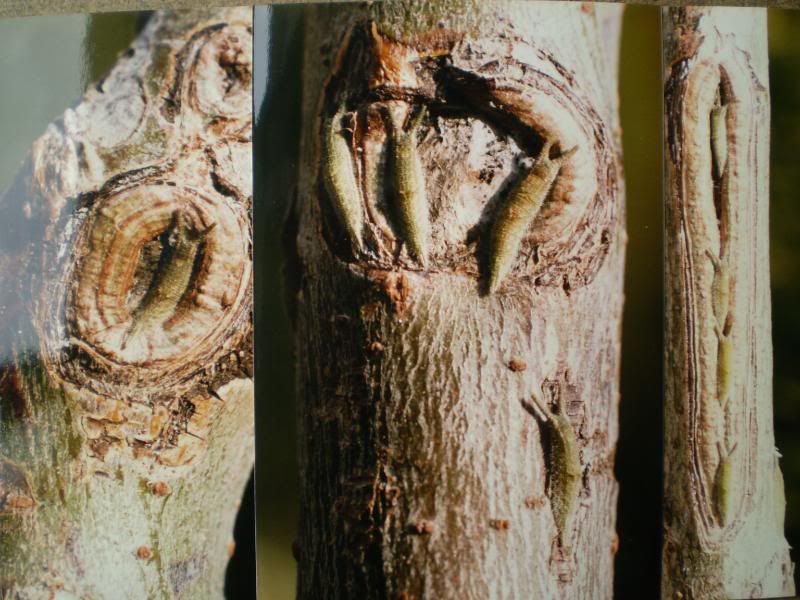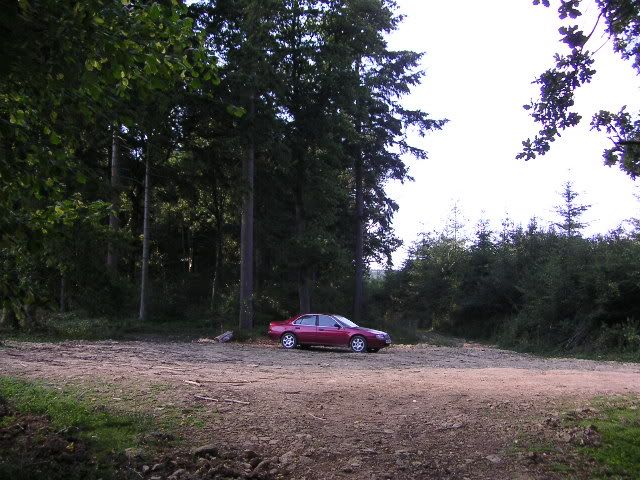November 2009 Sightings
- Dave McCormick
- Posts: 2388
- Joined: Fri Mar 16, 2007 8:46 pm
- Location: Co Down, Northern Ireland
- Contact:
Re: November 2009 Sightings
That tree looks like it may be birch, possibly silver birch?
Well, no butterflies around here, just moths. Found a female december moth yesterday and now have 100 eggs as she laid on egg boxes in my heath trap, so someone I know and I are going to rear the cats. I am rearing on a small oak I am raising from cutting. We are taking half eggs each and hopefully some will get to adults next year.
Well, no butterflies around here, just moths. Found a female december moth yesterday and now have 100 eggs as she laid on egg boxes in my heath trap, so someone I know and I are going to rear the cats. I am rearing on a small oak I am raising from cutting. We are taking half eggs each and hopefully some will get to adults next year.
Cheers all,
My Website: My new website: http://daveslepidoptera.com/ - Last Update: 11/10/2011
My Nature videos: http://www.youtube.com/user/DynamixWarePro
My Website: My new website: http://daveslepidoptera.com/ - Last Update: 11/10/2011
My Nature videos: http://www.youtube.com/user/DynamixWarePro
- Padfield
- Administrator

- Posts: 8112
- Joined: Sun Nov 05, 2006 10:19 pm
- Location: Leysin, Switzerland
- Contact:
Re: November 2009 Sightings
I'm really not an expert at hunting hibernating iris caterpillars, despite having a shiny new book telling me how to do it. I need Kipper to come out here and get me started.
The book said to begin by looking for dangling leaves, suspended by silk threads, either from the leaf stem or from the side of the leaf. I found these at sites where I know female emperors were laying in July this year:


Both are quite strongly attached with silk.
Near the first was this leaf with feeding damage - could it be iris damage?

But no trace of caterpillars - and I looked at dozens of sallow trees and bushes.
No point in going out today:

(Huémoz, 30th Nov)
But I won't give up.
Guy
The book said to begin by looking for dangling leaves, suspended by silk threads, either from the leaf stem or from the side of the leaf. I found these at sites where I know female emperors were laying in July this year:


Both are quite strongly attached with silk.
Near the first was this leaf with feeding damage - could it be iris damage?

But no trace of caterpillars - and I looked at dozens of sallow trees and bushes.
No point in going out today:

(Huémoz, 30th Nov)
But I won't give up.
Guy
Guy's Butterflies: https://www.guypadfield.com
The Butterflies of Villars-Gryon : https://www.guypadfield.com/villarsgryonbook.html
The Butterflies of Villars-Gryon : https://www.guypadfield.com/villarsgryonbook.html
Re: November 2009 Sightings
Why is the purple emperor caterpillar tying the leaves to the twig with silk? It would make sense as a hibernaculum but I thought the larvae hibernated in clefts between twigs.
- Padfield
- Administrator

- Posts: 8112
- Joined: Sun Nov 05, 2006 10:19 pm
- Location: Leysin, Switzerland
- Contact:
Re: November 2009 Sightings
According to my book, the young caterpillar, while still feeding, uses a resting leaf towards the end of a branch and when autumn approaches it secures this leaf so it won't fall with the other leaves. As you say, it only very rarely hibernates on a leaf (the book does include pictures of this happening). Normally it hibernates on a branch, near or in a fork. The book recommends looking for these dangling 'resting leaves' in early winter but advises that most of them will be lost in winter storms so it's not so useful in late winter.
Guy
Guy
Guy's Butterflies: https://www.guypadfield.com
The Butterflies of Villars-Gryon : https://www.guypadfield.com/villarsgryonbook.html
The Butterflies of Villars-Gryon : https://www.guypadfield.com/villarsgryonbook.html
- Neil Hulme
- Posts: 3568
- Joined: Fri Feb 08, 2008 8:27 pm
Re: November 2009 Sightings
Hi Guy,
Yes, they often secure the leaves in this way, when leaf-fall might pre-date their move to a safe hibernation spot, but I doubt that it's the best way to search for the larvae. Matthew (Oates) will shortly be publishing some very interesting data on pre-hibernation caterpillars and he's got some really good hints on the best type of sallows to search, including leaf colour, texture, degree of shade etc. This cuts down on the search-time significantly, although it's always going to be a time-consuming task. The cats usually over-winter next to a bud, in a fork or crevice in the stem and their camouflage colour will vary accordingly. I'll leave him to explain all, in his excellent piece which will appear as part of the 2009 Purple Empire E-book. He's spent a huge amount of time researching this over the past few months and has come up with some amazing stuff - like brawling caterpillars!
I find that spring is a good time to locate the larvae, when that very characteristic feeding damage, to both left and right distal margins of the leaf, begins to show on new growth. It's also surprisingly easy to find abandoned silk pads and shed skins at this time - they won't be far away.
Neil
Yes, they often secure the leaves in this way, when leaf-fall might pre-date their move to a safe hibernation spot, but I doubt that it's the best way to search for the larvae. Matthew (Oates) will shortly be publishing some very interesting data on pre-hibernation caterpillars and he's got some really good hints on the best type of sallows to search, including leaf colour, texture, degree of shade etc. This cuts down on the search-time significantly, although it's always going to be a time-consuming task. The cats usually over-winter next to a bud, in a fork or crevice in the stem and their camouflage colour will vary accordingly. I'll leave him to explain all, in his excellent piece which will appear as part of the 2009 Purple Empire E-book. He's spent a huge amount of time researching this over the past few months and has come up with some amazing stuff - like brawling caterpillars!
I find that spring is a good time to locate the larvae, when that very characteristic feeding damage, to both left and right distal margins of the leaf, begins to show on new growth. It's also surprisingly easy to find abandoned silk pads and shed skins at this time - they won't be far away.
Neil
- Padfield
- Administrator

- Posts: 8112
- Joined: Sun Nov 05, 2006 10:19 pm
- Location: Leysin, Switzerland
- Contact:
Re: November 2009 Sightings
Thanks, Kipper. I look forward impatiently to reading the e-book! My book does give some advice on which bushes to search, but the more help with this the better. It says, for instance, 'the chances of success are without doubt the greatest when one searches on shaded to semi-shaded Goat Willow situated in cool depressions in the landscape, along woodland streams or in marshy clearings'. It also discusses which branches to search - preferably ones without blossom buds, on relatively young sallow. But above all, it refers to the importance of experience, which you and Matthew Oates obviously have, and I lack completely!!
My wood is on a rather steep mountainside and only some of the sallow is accessible at all, making it that much more difficult. But I WILL find some caterpillars, even if I have to wait until spring. I will be looking for white admiral hibernacula as well, but first I've got to work out how to recognise the honeysuckle in midwinter...
Guy
My wood is on a rather steep mountainside and only some of the sallow is accessible at all, making it that much more difficult. But I WILL find some caterpillars, even if I have to wait until spring. I will be looking for white admiral hibernacula as well, but first I've got to work out how to recognise the honeysuckle in midwinter...
Guy
Guy's Butterflies: https://www.guypadfield.com
The Butterflies of Villars-Gryon : https://www.guypadfield.com/villarsgryonbook.html
The Butterflies of Villars-Gryon : https://www.guypadfield.com/villarsgryonbook.html
-
Cotswold Cockney
- Posts: 487
- Joined: Sun Dec 31, 2006 9:39 pm
- Location: GLOUCESTERSHIRE
Re: November 2009 Sightings
Every time the prehibernation iris larva leaves its normal resting leaf tip to feed on nearby leaves, it places a silk thread on the leaves and twigs as it goes and moves about the bush. It may make three or four such moves to other leaves to feed during each day leaving a silk trace as it does so. It may feed and move like that every day for maybe ninety days before entering hibernation. Each trip leaves a little more silk on the resting leaf and nearby twigs the larva visits. Over a period the silk becomes more strands and thus thicker and stronger although still very thin. I have found larvae still on their rest leaves in Wiltshire woods in late November. Most have usually moved from their leaves to rest alongside, buds, in twig forks but, many move to the main trunk proper and spin a pad of silk in some bark crevice or other nook or cranny by that time. They are much harder to locate than those in twig forks and alongside buds...Matsukaze wrote:
Why is the purple emperor caterpillar tying the leaves to the twig with silk? It would make sense as a hibernaculum but I thought the larvae hibernated in clefts between twigs.
Once settled down, they appear to turn brown and not regain their usual green colour until the spring. However, using a x10 hand lens on the hibernating 'brown' larva reveals that is is actually still green. The structure of the larva's skin surface changes breaking up the light in some way possibly, which to the naked eyes, appears brown. To this observer, the colour change is structural rather than a real colour change.
This composite picture shows favourite hibernating locations ~ it's a digital image of three carefully placed 6 x 4 prints taken about twenty five years ago. :~

Cotswold Cockney is the name
All aspects of Natural History is my game.
All aspects of Natural History is my game.
- Neil Hulme
- Posts: 3568
- Joined: Fri Feb 08, 2008 8:27 pm
Re: November 2009 Sightings
Hi CC,
Another fascinating account. Of the many interesting postings that appear on this site, there are none that I enjoy reading more than yours. In these days of relatively cheap and straightforward publishing (even an 'E-book' would be good), I would love to see your observations and recollections collated, even if they formed a largely random selection of nature notes. Keep 'em coming!
Neil
Another fascinating account. Of the many interesting postings that appear on this site, there are none that I enjoy reading more than yours. In these days of relatively cheap and straightforward publishing (even an 'E-book' would be good), I would love to see your observations and recollections collated, even if they formed a largely random selection of nature notes. Keep 'em coming!
Neil
- Padfield
- Administrator

- Posts: 8112
- Joined: Sun Nov 05, 2006 10:19 pm
- Location: Leysin, Switzerland
- Contact:
Re: November 2009 Sightings
I agree entirely. And those are marvellous pictures.
It is very easy these days to publish a book for nothing more than the marginal cost of each book bought, by using an internet publisher. That said, I suspect you have the material to do it properly through a mainstream publisher. I really look forward to reading it, whatever...
Guy
It is very easy these days to publish a book for nothing more than the marginal cost of each book bought, by using an internet publisher. That said, I suspect you have the material to do it properly through a mainstream publisher. I really look forward to reading it, whatever...
Guy
Guy's Butterflies: https://www.guypadfield.com
The Butterflies of Villars-Gryon : https://www.guypadfield.com/villarsgryonbook.html
The Butterflies of Villars-Gryon : https://www.guypadfield.com/villarsgryonbook.html
Re: November 2009 Sightings
Thirded!
Some of Matthew Oates' work on the Purple Emperor has now been published on the Purple Empire website. It contains a particularly fine opening paragraph.
Some of Matthew Oates' work on the Purple Emperor has now been published on the Purple Empire website. It contains a particularly fine opening paragraph.
Re: November 2009 Sightings
Some of the well established journals (Entomologist's Record, Entomologist's Gazette, British Journal of Entomology and Natural History etc. etc.) would welcome such material with open arms, they're crying out for it in fact...!
The problem with publishing on-line is that work then often becomes very difficult to locate. Much valuable research (especially that carried out by amateurs) is effectively lost. It can be like searching for a specific pebble on a beach.
Work published on the internet is also nigh impossible to cite as a reference when referred to in further research as the location is very rarely stable. This is already a problem and is certainly going to be a big problem in the future.
An established Journal has the advantage of being indexed, widely distributed, and easy to cite as a reference when required.
Felix.
The problem with publishing on-line is that work then often becomes very difficult to locate. Much valuable research (especially that carried out by amateurs) is effectively lost. It can be like searching for a specific pebble on a beach.
Work published on the internet is also nigh impossible to cite as a reference when referred to in further research as the location is very rarely stable. This is already a problem and is certainly going to be a big problem in the future.
An established Journal has the advantage of being indexed, widely distributed, and easy to cite as a reference when required.
Felix.
-
Cotswold Cockney
- Posts: 487
- Joined: Sun Dec 31, 2006 9:39 pm
- Location: GLOUCESTERSHIRE
Re: November 2009 Sightings
Glad to hear my observations are appreciated.
HABITAT CHANGES :~
During the late 1960s, early 1970s, I spent many happy times in a favourite West Sussex wood. I am sometimes at my most content when in the solitude of those southern and central English broad-leaved woodlands. It then had a strong thriving colony of Apatura iris there and I never saw another soul there on any of my frequent visits ~ I had this magnicficent and extensive broadleaved woodland all to myself.. I used to drive down from London in my MGB tourer with the hood down and my point to point to point journey times would be hard to match in modern times, even with more powerful cars such is modern traffic density on UK roads. Worth mentioning although I did not know this at the time, my MGB was a nice blue BMC colour ~ actually, BMC IRIS blue of course ~ a simple happy coincidence and that fine little car attracted male iris in several southern woodlands over the years ~ I have a picture of the car somewhere still . Anyway, back on track ...I only lost regular touch with this fine woodland when I married in 1972 and moved permanently to Gloucestershire in late 1971 when visits to my favourite wood became less frequent.
Mainly Oak and some Beech back then, it's less controlled woodland management by chance provided ideal habitat for one of my favourite butteflies. That management left smallish clear felled areas where small seedling conifers where planted and those areas were well populated by fine mature and sapling Sallows. On one occasion, I discovered a sap run at eye level on an Oak at the side of a track with several examples of both sexes feeding. So well fed and dozey that you could pick one up between finger and thumb ... and put them back! One visit in the rainey summer of 1972 there was little chance of seeing anything flying so I concentrated on searching the sallows which were quite tall and still higher than the faster growing conifers. Within one hour I had located thirteen ova, which from their colouring, were mainly laid within the past two days. The date ~ August 13th 1972. Thereafter my visits became rare.
In August 2006, I had to travel to pick up some car parts in Surrey so made a detour via the wood which I had not visited for many years. That area where I found those Ova had changed considerably. Those little conifers were now massive mature Douglas Firs, some over one hundred feet high now and the general area not really suitable for A.iris although there were numerous other woodland species there, including good numbers of A.paphia; the Silver-Washed Fritillary. I took a few pictures of the wood including this one with my Rover 620ti in the frame to give a scale idea of just how big those conifers had become.

I searched some of the sallows around and nearby but, not a trace and little sign of any larval feeding of any kind on any of the many leaves I checked. However, it's not all bad news. An area close by of some five acres had been clear felled maybe a couple of years previously and that I feel certain would again be suitable for iris in a few years time. All the signs were there and I'm looking forward to again visiting those fine woods come next summer after a four year absence.
Roll on ...
HABITAT CHANGES :~
During the late 1960s, early 1970s, I spent many happy times in a favourite West Sussex wood. I am sometimes at my most content when in the solitude of those southern and central English broad-leaved woodlands. It then had a strong thriving colony of Apatura iris there and I never saw another soul there on any of my frequent visits ~ I had this magnicficent and extensive broadleaved woodland all to myself.. I used to drive down from London in my MGB tourer with the hood down and my point to point to point journey times would be hard to match in modern times, even with more powerful cars such is modern traffic density on UK roads. Worth mentioning although I did not know this at the time, my MGB was a nice blue BMC colour ~ actually, BMC IRIS blue of course ~ a simple happy coincidence and that fine little car attracted male iris in several southern woodlands over the years ~ I have a picture of the car somewhere still . Anyway, back on track ...I only lost regular touch with this fine woodland when I married in 1972 and moved permanently to Gloucestershire in late 1971 when visits to my favourite wood became less frequent.
Mainly Oak and some Beech back then, it's less controlled woodland management by chance provided ideal habitat for one of my favourite butteflies. That management left smallish clear felled areas where small seedling conifers where planted and those areas were well populated by fine mature and sapling Sallows. On one occasion, I discovered a sap run at eye level on an Oak at the side of a track with several examples of both sexes feeding. So well fed and dozey that you could pick one up between finger and thumb ... and put them back! One visit in the rainey summer of 1972 there was little chance of seeing anything flying so I concentrated on searching the sallows which were quite tall and still higher than the faster growing conifers. Within one hour I had located thirteen ova, which from their colouring, were mainly laid within the past two days. The date ~ August 13th 1972. Thereafter my visits became rare.
In August 2006, I had to travel to pick up some car parts in Surrey so made a detour via the wood which I had not visited for many years. That area where I found those Ova had changed considerably. Those little conifers were now massive mature Douglas Firs, some over one hundred feet high now and the general area not really suitable for A.iris although there were numerous other woodland species there, including good numbers of A.paphia; the Silver-Washed Fritillary. I took a few pictures of the wood including this one with my Rover 620ti in the frame to give a scale idea of just how big those conifers had become.

I searched some of the sallows around and nearby but, not a trace and little sign of any larval feeding of any kind on any of the many leaves I checked. However, it's not all bad news. An area close by of some five acres had been clear felled maybe a couple of years previously and that I feel certain would again be suitable for iris in a few years time. All the signs were there and I'm looking forward to again visiting those fine woods come next summer after a four year absence.
Roll on ...
Cotswold Cockney is the name
All aspects of Natural History is my game.
All aspects of Natural History is my game.
